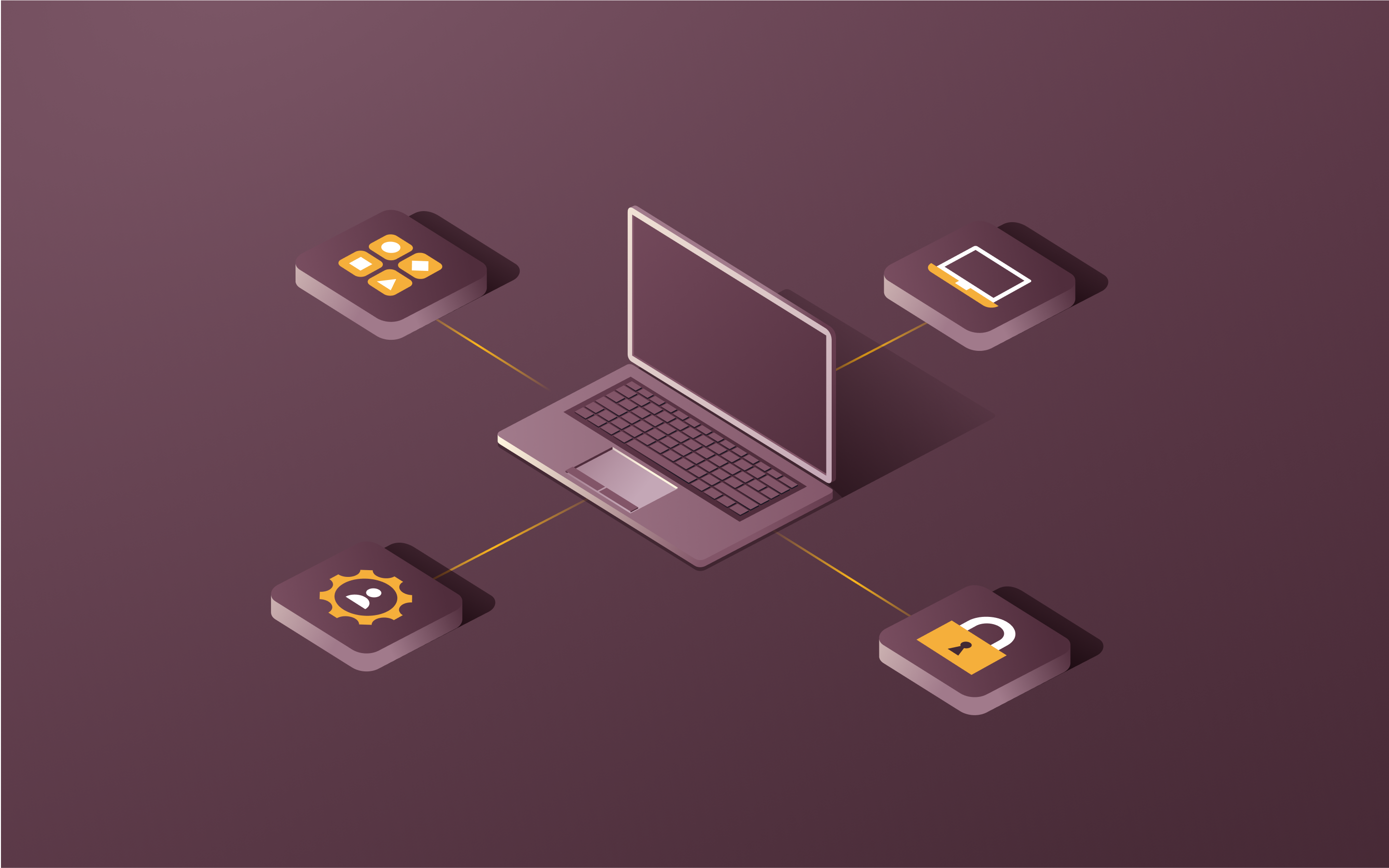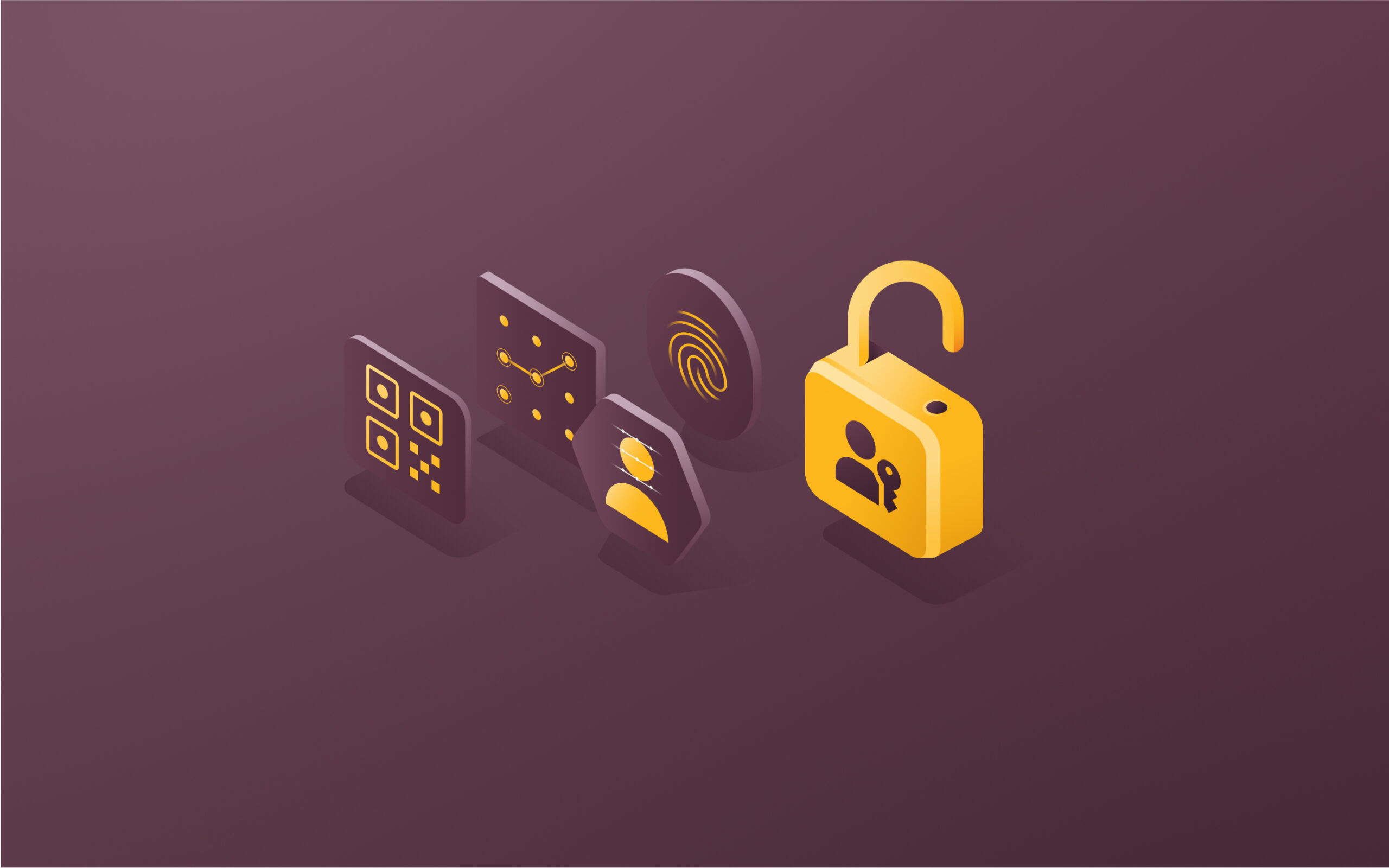What is device trust and how does it work?

Device trust is a security approach that verifies the integrity and compliance of a device before allowing it to access corporate resources. It involves evaluating factors like the device's identity, security settings, and user credentials to determine if it meets the organization's security standards and can be trusted on the network.
In today's hyper-connected business world, securing your company's digital assets is an ongoing balancing act. Just when you think you've got everything locked down, a new threat pops up. Bring your own device (BYOD) policies and remote work have only made things more complicated. How can you ensure that every laptop, smartphone, and tablet accessing your network is secure, compliant, and not a ticking time bomb?
That's where device trust comes in. It functions as a gatekeeper for your network, verifying each device's credentials and ensuring it meets security standards before granting access. In this piece, we’ll take a deep dive into the concept of device trust, exploring what it is, how it works, and its various challenges.
What is device trust?
Device trust is a security framework that establishes the trustworthiness of a device before granting it access to network resources. It's like a background check for devices, verifying that they meet certain security standards and requirements.
Think of it like this: When you're hiring a new employee, you don't just take their word that they're qualified and trustworthy. You verify their credentials, check references, and maybe even do a criminal background check. Device trust works on the same principle. Before a device is allowed to connect to your network, it undergoes a rigorous verification process to ensure it's not a security risk.
Device trust is a key pillar of zero trust security, a model that assumes no device or user can be inherently trusted based on their location or previous access. In a zero trust world, every access request is treated with suspicion until the device can prove it meets all security requirements and the user can authenticate their identity. It's essentially a "trust but verify" policy for both devices and users accessing your network.
How does device trust work?
So, how does device trust actually work in practice? It's not just a simple "yes" or "no" check. Device trust involves a multi-step verification process that assesses various aspects of a device's security posture. The specific steps may vary based on the organization's chosen device trust implementation, but generally, the process includes:
1. Device identification
The first step is figuring out the identity of the device trying to connect. This is typically handled by a mobile device management (MDM) system, which uses unique device attributes like MAC address, serial number, or a digital certificate to identify and track devices. The MDM system maintains an inventory of all devices, along with their security history and compliance status.
For example: Let's say an employee tries to access the company CRM from their personal smartphone. The device trust system, which is often part of or integrated with the MDM solution, would first check the phone's unique device ID against its inventory. This allows it to determine if the device has been previously approved, denied, or flagged for security issues. After identifying the device, the system would then proceed to check other security aspects like the device's operating system version, patch level, and installed apps to ensure they meet the organization's security standards.
2. Identity verification
Device trust isn't just about the device itself, but also the person using it. After all, a secure laptop in the wrong hands can still be a security risk. That's why identity verification is a crucial part of the device trust process.
Typically, this involves methods like multi-factor authentication (MFA) to ensure that the user is who they claim to be. MFA usually combines something the user knows (like a password) with something they have (like a security token or biometric data).
Going back to our smartphone example, after identifying the device, the system would prompt the employee to verify their identity. This could involve entering a password and a one-time code sent to their registered email or or generated by an authenticator app. Some organizations may also require biometric verification, such as a fingerprint or facial recognition, for an additional layer of security.
3. Compliance validation
Once the device and user are identified, the next step is verifying that the device meets the organization's security policies. Compliance checks ensure that devices have essential security controls in place, such as:
- Up-to-date operating system and security patches
- Anti-malware and antivirus software installed and running
- Disk encryption enabled
- Required security configurations (e.g., strong passcode policies, screen lock timeout)
It's important to note that compliance standards can vary widely depending on the organization's industry and applicable regulations. For example, healthcare organizations must adhere to strict HIPAA requirements for protecting patient data, while financial institutions are subject to PCI-DSS standards for safeguarding payment information. This makes the compliance validation step particularly critical for organizations in regulated sectors, as failure to meet these standards can result in hefty fines and reputational damage.
If our employee's smartphone is running an outdated OS version with known vulnerabilities, it would fail the compliance check and be flagged for remediation before being granted access.
4. Risk assessment
Even if a device passes basic compliance checks, it may still pose a security risk based on contextual factors. Device trust systems assess risk based on attributes like:
- Network connection: Is the device connecting from a trusted corporate network or an unsecured public Wi-Fi hotspot?
- Geolocation: Is the device accessing from a typical location or an unusual foreign country?
- Time of day: Is the access request occurring during normal business hours or at 3 a.m. on a Sunday?
- Behavioral patterns: Is the user accessing systems and data they normally don't, or attempting to download unusually large amounts of data?
Risk assessment helps identify anomalous or suspicious activity that warrants additional scrutiny. In this case, if our employee tries to access the CRM from an airport Wi-Fi network in a foreign country at 2 a.m., that would raise some major red flags and likely trigger additional security measures.
5. Security posture check
After assessing risk, the device trust system conducts a deeper evaluation of the device's overall security posture. Security posture assessment may include:
- Vulnerability scanning to identify any missing patches or misconfigurations
- Behavioral analysis and real-time monitoring to detect any signs of compromise or malware infection
- Integrity checks to ensure the device hasn't been jailbroken, rooted, or tampered with
Continuing our example, let's say the employee's smartphone passes the risk assessment but is found to have suspicious files indicating a possible malware infection. The device would fail the security posture check and be quarantined until the issue is resolved.
6. Access decision
The final step is deciding whether to grant or deny access based on the results of the previous steps. If the device passes all checks with flying colors, it's deemed trustworthy and allowed to access network resources. If not, access is denied or limited based on the organization's policies.
For instance, if our employee's smartphone successfully completes all verification steps, it would be granted access to the CRM system. However, if any issues were identified along the way (e.g., outdated OS, high-risk network, signs of compromise), access might be blocked entirely or limited to basic functions until the device is brought into compliance.
The importance of using device trust
Relying solely on perimeter defenses and assuming everything inside the network is trustworthy is an outdated and risky approach. Modern cybersecurity practices recognize that breaches are increasingly likely, and organizations must prepare for when, not if, an attacker gains access to the network.
Device trust is essential for organizations of all sizes because it provides:
Granular access control
Device trust allows you to define and enforce precise access policies based on a device's security posture, user identity, and contextual risk factors. This ensures that only authorized and secure devices can access sensitive data and systems.
Continuous security monitoring
Device trust isn't a one-and-done checkup but a continuous process of monitoring and assessment. By constantly evaluating devices' security posture, device trust helps quickly identify and respond to any new vulnerabilities or threats.
Flexibility and scalability
In the age of remote work and BYOD, trying to secure a static perimeter is like trying to build a fence around a cloud. Device trust provides a flexible and scalable way to secure access to corporate resources, no matter where users are or what devices they're using. Users can work seamlessly from anywhere, while security teams can ensure consistent policy enforcement across all devices.
Compliance and audit readiness
Many industries have strict regulations around data protection and access control (e.g., HIPAA, GDPR, PCI-DSS). Device trust helps organizations meet these compliance requirements by providing granular access controls and detailed audit trails of all device activity.
4 challenges of implementing device trust
As with any security control, implementing device trust comes with its share of challenges. Organizations must be prepared to navigate issues like:
Gaining user buy-in
One of the biggest hurdles is getting employees on board with device trust. People are understandably protective of their personal devices and may resist having their employer monitor them. Organizations must clearly communicate the purpose and scope of device trust, emphasizing that it's about securing corporate data, not invading personal privacy. Providing options for users to enroll their own devices or use company-provided ones can help ease concerns.
Ensuring compatibility and interoperability
With the dizzying array of device types, operating systems, and configurations out there, ensuring that device trust solutions are compatible and interoperable with all of them can be a tall order. Organizations may need to deploy multiple device trust solutions or establish baseline requirements for devices allowed to access corporate resources.
This is particularly challenging when dealing with both managed devices (company-owned) and unmanaged devices (personal devices used for work), as well as legacy systems that may not support modern device trust solutions. Integrating older technologies that lack the necessary APIs or features for granular access control can create blind spots in an organization's security posture, requiring careful planning and potentially additional investments to bridge the gap.
Managing solution complexity
Implementing device trust across a large, complex environment is no small feat. It requires careful planning, coordination, and ongoing management to ensure that policies are consistently applied and enforced. Organizations may need to invest in training and resources to support device trust deployment and management, as well as in educating employees about the benefits and inner workings of the solution to alleviate any concerns or misconceptions they may have. This includes establishing clear roles and responsibilities, documenting policies and procedures, and providing adequate support and remediation processes for end-users.
Balancing security and usability
Device trust is ultimately about mitigating risk, but not at the expense of user productivity. Overly restrictive policies can frustrate users and hinder their ability to work effectively. Organizations must strike a balance between security and usability, using risk-based policies that adapt to the context of each access request. Providing self-service options for users to request exceptions or temporary access can also help maintain both security and flexibility.
Rippling: Device trust to protect your business network
Device trust is a powerful security control, but it's just one piece of the puzzle. To truly secure your endpoints, you need a comprehensive solution that integrates device trust with identity and access management, application security, and data protection.
That's where Rippling comes in. Rippling offers a comprehensive device trust solution as part of its integrated IAM and MDM capabilities, ensuring that only trusted devices are accessing company resources and internal systems.
And because Rippling offers IAM and MDM in one platform, you can configure device trust from a single system instead of juggling multiple siloed solutions. This streamlines the setup and management of device trust across your organization.
With Rippling, you can:
- Automate device onboarding and offboarding: Rippling integrates with your HR system to automatically provision and deprovision devices as employees join and leave the company.
- Create granular access policies: Use Supergroups and behavioral detection rules to ensure that only users on trusted devices can access company resources.
- Control third-party app access: Specify which third-party apps require a trusted device for access, adding an extra layer of security to your cloud ecosystem.
- Monitor rollout and usage: Easily track device trust adoption by viewing device and certificate details, including in the context of single sign-on requests, via the activity log and reports.
- Simplify device management: Rippling's device management capabilities allow you to easily manage, configure, and secure all your endpoints from a single console. You can push security updates, remotely lock or wipe devices, and ensure consistent policy enforcement across your entire fleet.
In all, Rippling provides an encompassing zero trust security solution to protect your data and endpoints and give your IT and security teams their sanity back.
Frequently asked questions
How does device trust differ from traditional security models?
Traditional security models focus on securing the network perimeter and assume that everything inside is trustworthy. Device trust flips that model on its head, assuming zero trust by default.
With device trust, the perimeter is wherever the device is. Every device must continuously prove its trustworthiness, regardless of whether it's inside or outside the corporate network. This allows for more granular, contextual access control and better protection against insider threats, even when dealing with unmanaged devices that may not be fully controlled by the organization.
What technologies are commonly used to implement device trust?
Device trust isn't a single technology but an approach that leverages multiple security controls, including:
- Endpoint visibility and control: Solutions like MDM, UEM, and endpoint detection and response (EDR) provide the ability to manage, configure, and monitor devices.
- Network access control (NAC): NAC solutions enforce policies around what devices are allowed on the network and what they can access.
- Risk and threat intelligence: Security information and event management (SIEM) and risk analytics tools help assess device risk based on factors like user behavior, device posture, and threat intelligence.
How does device trust align with zero trust security principles?
Device trust is a core component of zero trust security, which is based on the principle of "never trust, always verify.” In a zero trust model, every access request is evaluated based on the trustworthiness of the user and device, rather than the network location. Device trust provides the device-level visibility and control needed to enforce zero trust policies. By continuously assessing device posture and risk, device trust helps ensure that only trusted devices with secure configurations and no indicators of compromise can access sensitive resources.
Schedule a demo with Rippling IT today
This blog is based on information available to Rippling as of August 22, 2024.
Disclaimer: Rippling and its affiliates do not provide tax, accounting, or legal advice. This material has been prepared for informational purposes only, and is not intended to provide or be relied on for tax, accounting, or legal advice. You should consult your own tax, accounting, and legal advisors before engaging in any related activities or transactions.










